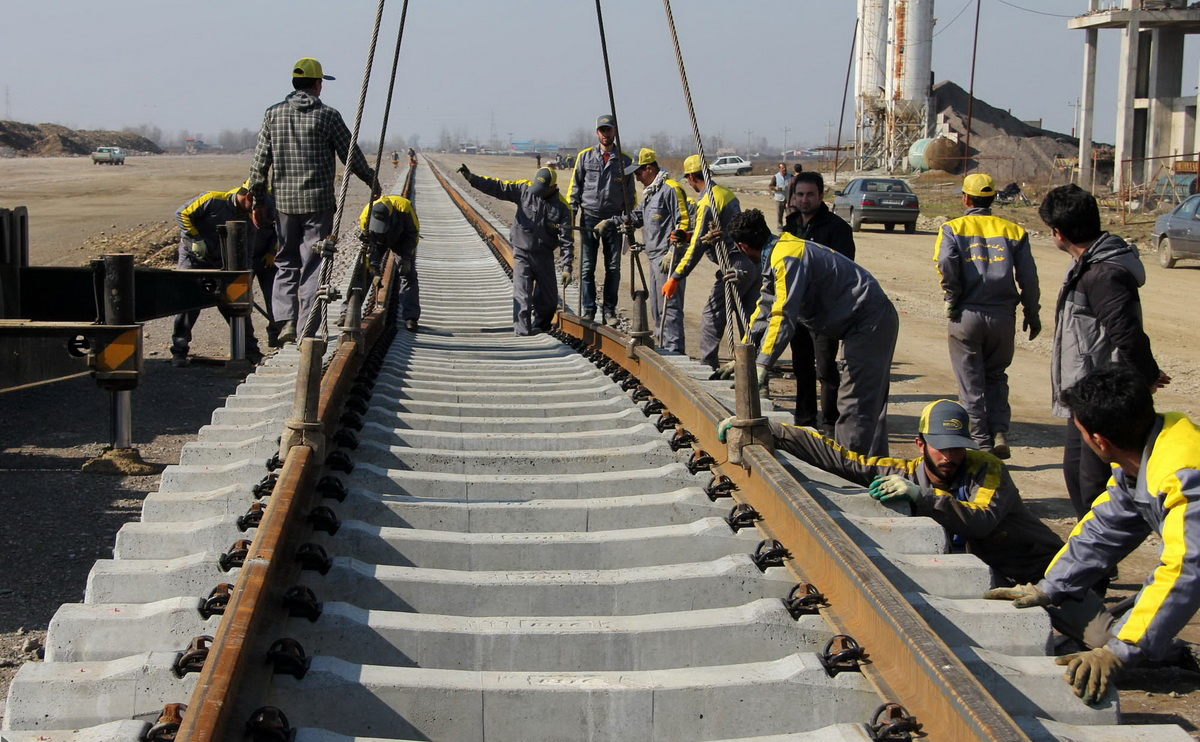Iran is planning to lay 9,134 kilometers of railroads, a deputy minister of roads and urban development said.
Kheirollah Khademi added that track-laying of more than 3,500 kilometers of railroads is currently underway, with 540 kilometers in the final stages, the government’s official website Dolat.it reported.
The Iranian government has placed expansion of Iran's rail network on top of its agenda to facilitate transportation, preserve hydrocarbon fuels and reduce air pollution.
“We are trying to transfer as many passengers and as much cargo as possible from roads to rail,” Oil Minister Bijan Namdar Zanganeh said last week.
The government has earmarked $500 million for the rail sector in the budget for the next Iranian year (March 2017-18).
As per the sixth five-year development plan (2017-22), which is currently being finalized in the parliament, it has been decided that 1% of Iran’s annual oil revenues be allotted to develop railroads over the next five years.
Development projects include double-tracking, electrification and construction of high-speed railroads and track-laying 1,500 km of new lines.
Iran's development plans outline government strategies in its budget planning for the next five years. The approval of the sixth plan has been delayed.
The plan tasks the government with increasing the share of rail in cargo and passenger transportation to a minimum of 30% and 20% respectively by 2021.
Major railroad projects in need of financing include Qazvin-Rasht (388 km), Tehran-Isfahan high-speed line (410 km), Mianeh-Tabriz (200 km), Tehran-Hamedan-Sanandaj (430 km), Shiraz-Bushehr (250 km), Gorgan-Bojnourd-Mashhad (570 km), Mianeh-Ardabil (175 km), the so-called Gharb (West) Rail project as well as electrification of Garmsar-Incheh Borun and Tehran-Mashhad lines.
The Gharb rail project includes two routes, which will ultimately connect the city of Arak in central Markazi Province to Khosravi Border Crossing in the western Kermanshah Province, bordering Iraq.
The first section of the route, from Arak to Kermanshah, has made 95% progress. Officials anticipate the inauguration, as soon as rail tracks and other components are put in place.
As for the Qazvin-Rasht project, despite the remarkable progress, the completion has been delayed by financial constraints. Its extension, from Rasht to Astara Port, close to Azerbaijan’s border, requires $500 million in investment by Azerbaijan. The railroad is part of a grand global transit project called International North-South Transport Corridor, which is aimed at connecting India to Europe via Iran, Azerbaijan and Russia.
Director general of Iranian Railways’ International Affairs Office, Abbas Nazari, said the government has defined $10 billion worth of rail projects for foreign investment following the implementation of the nuclear deal.
"Iran has been in talks with Italy, Russia, China, India, France, Turkey and Germany to attract the needed foreign capital," he said.
Italy has reportedly agreed to invest an aggregate of $4 billion, Russia will provide €1.2 billion for the Garmsar-Incheh Borun route and India is supplying rails worth $175 million for a route from southern port and special economic zone of Chabahar to the city of Zahedan, both in Sistan-Baluchestan Province.
Germany has also signed several agreements to invest in the manufacture of equipment in Iran. Early October, Siemens signed a contract to supply components for 50 diesel-electric locomotives to Iran.
Under the contract, signed with Iranian power and infrastructure group MAPNA during an official visit of German Economy Minister Sigmar Gabriel to Iran, Siemens agreed to deliver the components, which will be assembled in Karaj, Iran's fourth-largest city.


